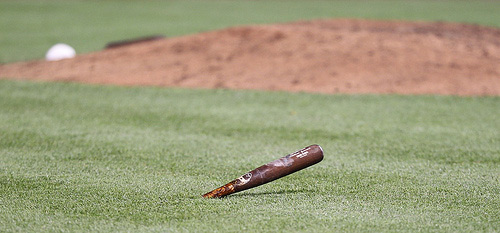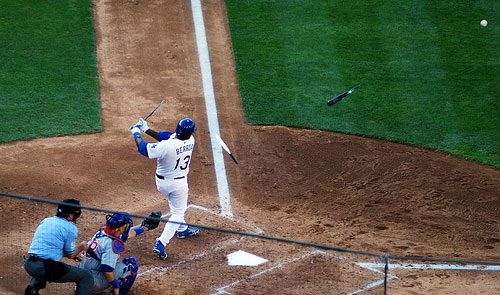Something special happens about mid-February every year. The days become a little less gray and a little less cold. There is promise on the wind — of warmer weather and sunnier days. If you close your eyes, you can smell the grass, hear the cheers and the crack of the bat, taste the Cracker Jacks. February and March are the preseason of the most glorious seven months of the year. Baseball.
The 2013 major league season is more than halfway over; we’ve just had the Mid-Summer Classic, also known as the All-Star game, and we are about to hit the dog days of August before racing into September, the playoffs and then the (not quite) World Series. Although some teams have seen the promise of the beginning of the season fade into the inevitability of mediocrity, many other teams still have a view to the playoffs and October glory.
Many fans bring a glove to games in the hope of snagging a foul ball, but that is not the only potential flying object from the field of play. Unlike in the other levels of baseball — from Little League to college — where metal bats are used, major league baseball bats are made from only one type of material — wood. And wooden bats, encountering pitches that can exceed 100 mph, only need the ball to strike one weaker spot on the bat before they break into two or shatter into multiple pieces. The results of these broken bats do not create cinema-quality moments like the one at the end of “The Natural.” Instead, flying bat pieces can create moments of fear for players, managers and fans alike.
But Major League Baseball, working with the U.S. Forest Service researchers at the Forest Products Laboratory, has spent the money and time over the last five years to make safer baseball bats. Researchers examined every broken bat that occurred in the major leagues from July through September 2008 while studying video of every bat breakage from 2009 onwards. Using these bats and the video, the folks at the Forest Products Laboratory were able to chart the composition, the cut and the quality of the bat and the wood, allowing them to pinpoint the causes of bat failure.
The two leading factors are, perhaps unsurprisingly, wood grain and density. A bat that is crafted with the grain, thus having a straight grain along the length of the bat is less likely to break into two than a bat that is crafted across the wood grain, leaving the grain angled. And while maple and ash bats continue to be the overwhelming favorite of major league players, a low-density maple bat is more likely to shatter into multiple pieces than ash or higher-density maple bats.

